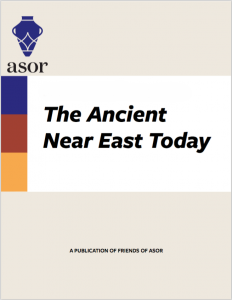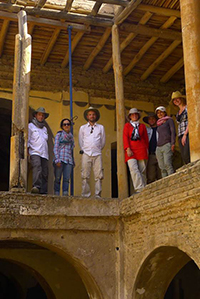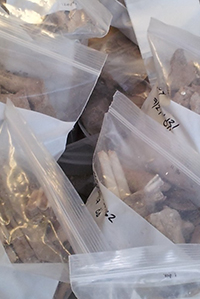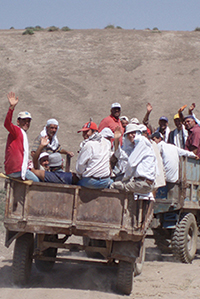

November 2013
Vol. 1, No. 8
Welcome to The Ancient Near East Today, No. 8! In this issue, Jason Ur presents an exciting new project exploring previously unknown areas of Iraqi Kurdistan, while Dan Warner returns to the continuing controversies of who built the ancient water system at Gezer.
This issue also highlights the question of community archaeology. Joe Uziel and Itzick Shai discuss how they bring the community, including schoolchildren, into the dig at Tel Burna, while Melissa Rosenzweig and Laurent Dissard review how a funeral on Ziyaret Tepe brought archaeologists closer to the community.
Finally, David Lipovitch reviews the real contributions, still too often unacknowledged, of animal bone archaeology, and Kirsi Valkama brings us up to date on how Biblical Archaeology is thriving in Finland. All this plus links to news, books, videos and more!
As always, please forward articles from The Ancient Near East Today to family and friends, post links to Facebook, and be in touch with the editor. Remember, being a Friend of ASOR is free!
New Explorations in the Heart of Assyria: Cities and Landscapes on the Erbil Plain, Kurdistan Region of Iraq
By: Jason Ur
After over 150 years of archaeological exploration, one might think that there are no great discoveries left to make in the Ancient Near East. All lost cities found, no more civilizations unaccounted for. This is not the case. The new stability in the Kurdistan Region of Iraq has encouraged archaeology (and business, and even tourists) to come back to Iraq. In the few years since archaeology resumed in earnest, there have already been surprising and important new discoveries…[READ MORE]
Who Built the Water System at Gezer? A Preliminary Assessment of the Renewed Excavations
By: Dan Warner
In 1907, the Irish archaeologist Robert S. Macalister found an anomaly during his pioneering excavations at Gezer. He thought it was a reservoir but the feature turned out to be one of the largest, if not the largest, water systems in the ancient Near East. But no sooner had he cleared it out, a severe winter storm hurled his debris back in sealing it for over 100 years and leaving it untouched until recently…[READ MORE]
Why Zooarchaeology Should Not Be the Neglected Step-Child of Archaeology and Zoology
By: David R. Lipovitch
Zooarchaeology, or animal bone archaeology, is a relatively new sub-field of archaeology. While some work was done as early as the 1870s in trying to understand the role animals played in Near Eastern societies, zooarchaeology did not really reach fruition until the 1960s and ‘70s. This stemmed primarily from attempts among anthropologically oriented archaeologists in the New World to create a more scientific discipline…[READ MORE]
Archaeology for the Masses: Tearing Down the Barriers between Archaeology and the Public
By: Itzick Shai and Joe Uziel
Who does archaeology belong to – the few or the many? Sitting in our archaeology labs we often find ourselves delving into small details uncovered in excavations. These questions of how past societies lived, interacted and functioned often seem of little importance to the wider public, which usually takes interest in the larger, more impressive remains…[READ MORE]
Common Ground: Archaeological Practice and Local Communities in Southeastern Turkey
By: Melissa Rosenzweig and Laurent Dissard
What is the proper relationship between archaeologist and a local community? Whose needs have priority? In this abridged piece from Near Eastern Archaeology, Melissa Rosenzweig and Laurent Dissard put this in concrete terms – when a family wants to bury a loved one on an archaeological site…[READ MORE]
The Archaeology of Israel-Palestine in Finland
By: Kirsi Valkama, University of Helsinki
Finland is a country of 5.4 million inhabitants, famous for the cell phone manufacturer Nokia, or at least what is left of it. But Finland had long made contributions to archaeology that outstrip its small size. The first person in Finland to become involved in Near Eastern archaeology was Aapeli Saarisalo (1896–1986), professor of Oriental Languages at the University of Helsinki. In fact, he was the first foreign scholar to resume work in the new state of Israel, when he appeared at the office of the Israel Antiquities Unit in March 1949, asking permission to continue his Galilee survey from the 1920s…[READ MORE]






